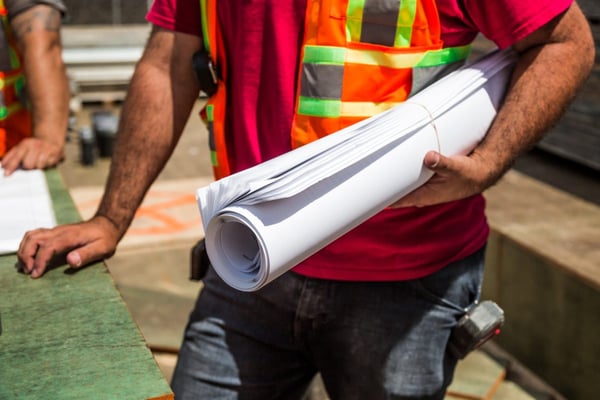Wearable technology is gaining ground in the construction industry. Companies are adapting with the ever-changing technology landscape and learning how to employ specific technologies to their benefit. One of the ways they are doing this is through visual wearable technology, or smart glasses.
Smart glasses have been around for consumer use, but the construction industry is learning how to adapt and use the technology to its advantage. Smart glasses combine augmented reality (AR) and virtual reality (VR) technologies to allow workers to “see” instructions, plans, blueprints and more. This technology is also the least expensive to implement, so smaller operations will find it easier to start here.
From Construction World, “Smart Glass wearers have the ability to control what they see on their lens by rolling your eyes in certain directions. The wearer can also access plans, instructions, and layouts all by using the glasses. Using smart glasses can eliminate the need for bulky plans and paperwork. Everything is portable and accessible at a moment’s notice which makes work more efficient. These devices also have the ability to record pictures, videos and voice commands that are integrated with mobile apps.”
There are a number of smart glasses products on the market today, but ForConstructionPros.com lists two options which are most beneficial to the construction industry.
XR10 with HoloLens 2
Trimble and Microsoft came together to collaborate on this device, so it’s solidly designed and the integrated code is well built. It has a flip-down visor so that users can easily switch to and from mixed reality.
““Productivity is what is driving people to the HoloLens,” says Jordan Lawver, portfolio manager for mixed reality at Trimble. “The HoloLens enhances the understanding of what you are doing and the way you collaborate with others around that understanding. Construction is like a big puzzle. The various groups come together, each tasked with a part of the solution.”
“You can have an HVAC contractor and a plumbing contractor, both equipped with an XR10 with HoloLens 2, looking at a section of a building and seeing where each person’s work will affect their work. This allows you to catch issues before they happen, which eliminates rework downstream,” says Lawver.”
RealWear HMT-1
This device is similar in appearance to the XR10, but it is not mixed reality, it’s a wearable computer. HMT stands for head-mounted tablet. The HMT-1 complies with ANSI-type standards and personal protection equipment. It provides the capability to solve a problem while hundreds of miles away, if necessary. Ever need an expert to fix a problem, but they aren’t close enough to do the repair right then? The HMT-1 is a valuable solution because an expert can see the problem remotely.
“It’s a mobile heads up display that has the ability for you take pictures of what you are looking at and to have remote hands and eyes so an expert can guide a person through the steps of doing something while not being present,” says Aaron Cohen, President, RealWear.
“There is no difference between having a competent person being walked through a task that is guided by an expert using our device and having the expert on site,” says Cohen. “So, there is no benefit to incurring the costs and delaying the repair by transporting the expert to the site.”
Visual wearable technology enhances safety because it is hands-free. Smart glasses are a great starting point for any business looking to employ wearable technology. The mixed-reality features and ability for far away experts to assist with complicated repairs, plus being able to see instructions, blueprints and other important job site information without a worker having to stop what they are doing is huge. It means less downtime, fewer stoppages, fewer delays, curbing potential problems and hazards before they happen. All if this leads to jobs being completed on time and increased worker safety, which leads to increased trust by customers and increased profits for your business. Who doesn’t want that?

Recent Posts
- Spec Home Loans: Complete Guide to Construction Financing for Builders
- Spec Construction Loans: A Spec Line of Credit Is Worth the Paperwork
- Spec Homes and Pre-Sale Homes: Relative Benefits for a Spec Builder
- Spec Construction Success: Insights for the Investor Builder
- How Is a Spec House Different From Other Kinds of House Construction?
